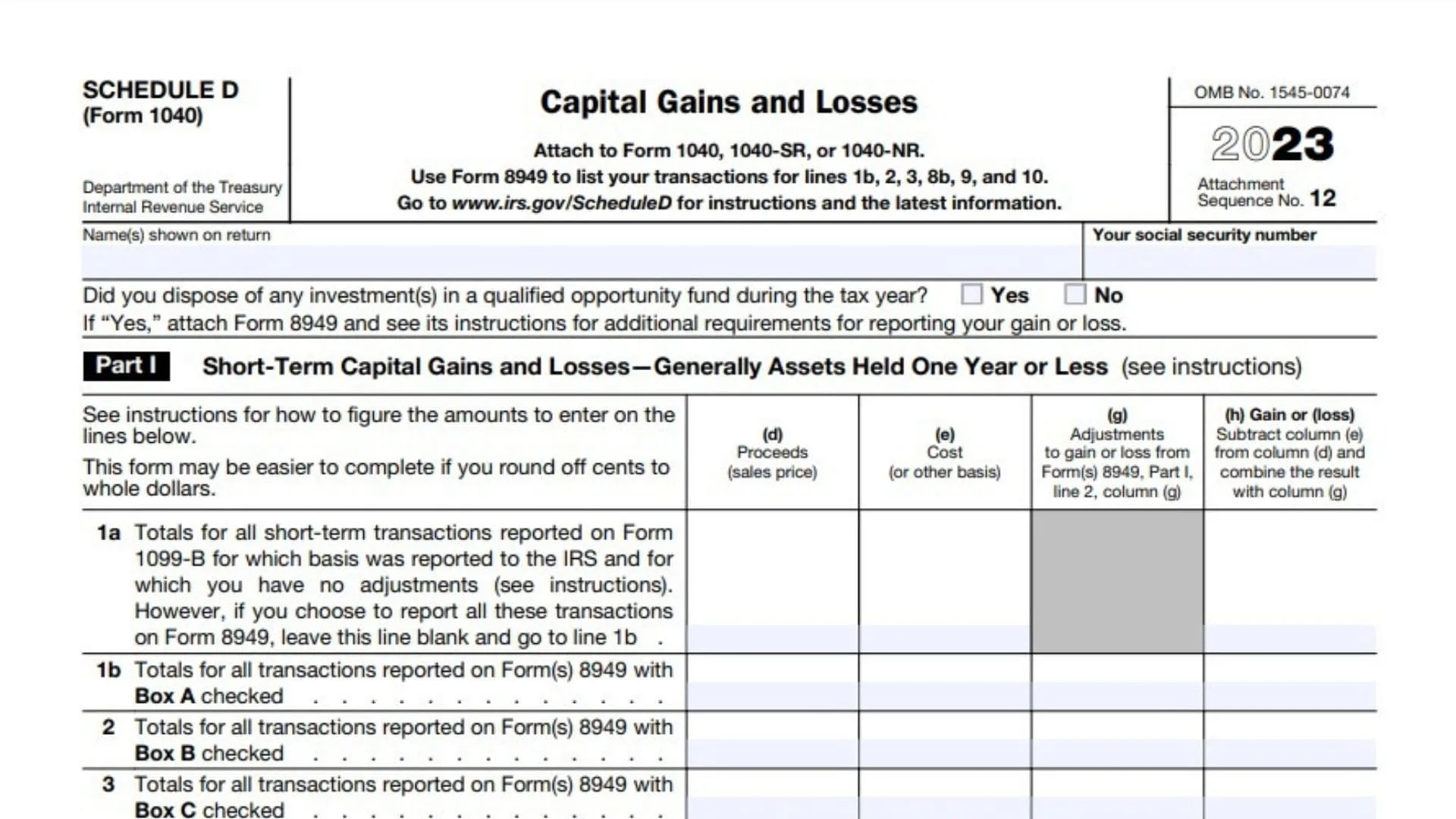
When a partner acquires an interest in a partnership that has a Section 754 election in effect, a crucial tax adjustment known as the Section 743(b) adjustment comes into play. This adjustment aims to bridge the gap between the transferee partner’s outside basis (the cost basis in their partnership interest) and their share of the partnership’s inside basis (the partnership’s adjusted tax basis in its assets). The resulting excess 743(b) basis can significantly impact how the transferee partner reports capital gains and losses on Schedule D (Capital Gains and Losses) of their tax return. Understanding this complex interplay between partnership taxation and individual tax reporting is essential for partners and tax professionals to ensure accurate reporting and compliance with IRS regulations. This article will explore the mechanics of the Section 743(b) adjustment, its relevance to Schedule D, and its implications for partners involved in partnership transactions, transfers of partnership interests, and partnership distributions.
Understanding Section 743(b) Adjustment
The Section 743(b) adjustment is triggered when a partnership has a Section 754 election in effect and a partner transfers their interest in the partnership, either through a sale, exchange, or inheritance. This adjustment is unique to the transferee partner and does not impact the basis of partnership property for other continuing partners. The purpose of this adjustment is to align the transferee partner’s outside basis with their share of the inside basis of the partnership property, preventing potential disparities in income reporting.
Calculating the Section 743(b) Adjustment
The amount of the Section 743(b) adjustment is determined by the difference between the transferee partner’s outside basis and their share of the inside basis of partnership property. The calculation of the transferee’s share of the inside basis is guided by regulations and follows a deemed-sale approach.
Allocation of the Adjustment
Once the amount of the adjustment is determined, it must be allocated among the partnership’s assets according to Section 755 and its regulations. This allocation process seeks to minimize the difference between the fair market value (FMV) and the adjusted tax basis of the partnership’s assets on a property-by-property basis.
Impact on Schedule D Reporting
The excess 743(b) basis resulting from the Section 743(b) adjustment directly affects how the transferee partner reports capital gains and losses on Schedule D.
- Increased Outside Basis: If a partner’s outside basis is higher than their share of the inside basis, the excess 743(b) basis can reduce the amount of taxable gain recognized when they sell their partnership interest. This is because the adjustment effectively increases their adjusted inside basis in the partnership’s assets, reducing the gain realized upon sale.
- Decreased Outside Basis: Conversely, if a partner’s outside basis is lower than their share of the inside basis, the negative 743(b) basis adjustment could increase the taxable gain recognized on the sale.

Importance of Section 754 Election
The Section 754 election is crucial in preventing distortions in income reporting that can arise from disparities between inside and outside bases. Without this election, new partners might face higher taxable gains due to the difference between their purchase price (outside basis) and their share of partnership assets (inside basis). By enabling the Section 743(b) adjustment, the Section 754 election aligns these bases for the transferee partner. However, it’s important to note that this election must be made proactively by the partnership and remains in effect for all future transactions unless revoked.
Reporting Excess 743(b) Basis Adjustments
Partnership Reporting
Partnerships that make a Section 743(b) adjustment are required to report these adjustments on Form 1065 (U.S. Return of Partnership Income). The partnership must attach a statement to the return detailing the computation of the adjustment and the partnership properties to which the adjustment has been allocated. Additionally, the partnership must provide specific information to the transferee partner on Schedule K-1.
Partner Reporting
Partners will find details about their share of income, deductions, and other items, including the Section 743(b) adjustment, on Schedule K-1. Information related to any increase or decrease in taxable income resulting from Section 743(b) adjustments will be included on specific lines of Schedule K-1, which then flows into the partner’s Schedule D if there are associated capital gains or losses.

FAQs
What triggers a Section 743(b) adjustment?
It’s triggered when a partnership has a Section 754 election in effect and there’s a transfer of a partnership interest, either by sale, exchange, or inheritance.
How is the excess 743(b) basis calculated?
It’s the difference between the transferee partner’s outside basis and their share of the partnership’s inside basis.
Why is the Section 754 election important?
It allows for basis adjustments, aligning the transferee partner’s outside and inside bases, preventing income reporting distortions.
Where are Section 743(b) adjustments reported?
Partnerships report them on Form 1065 and provide details on Schedule K-1, which partners use for their individual tax reporting, including Schedule D.